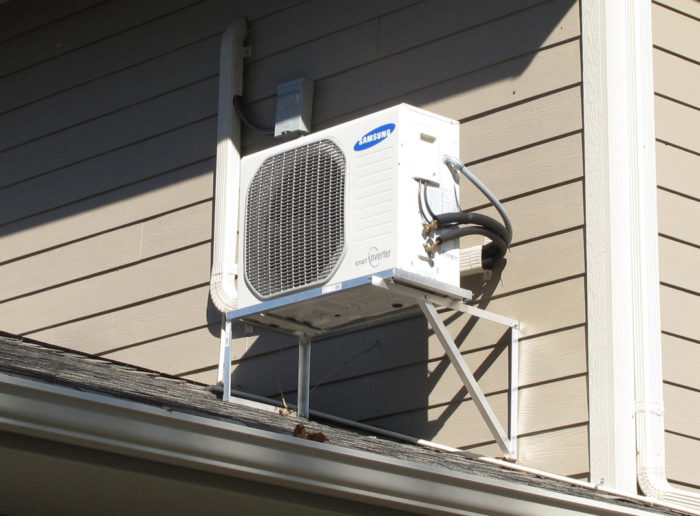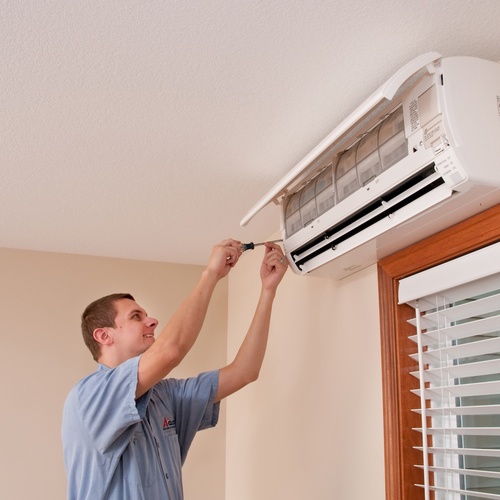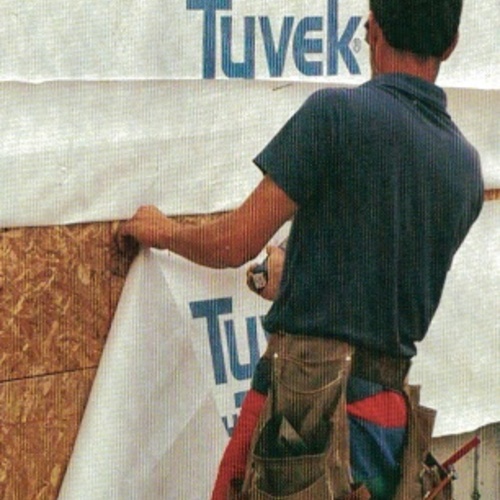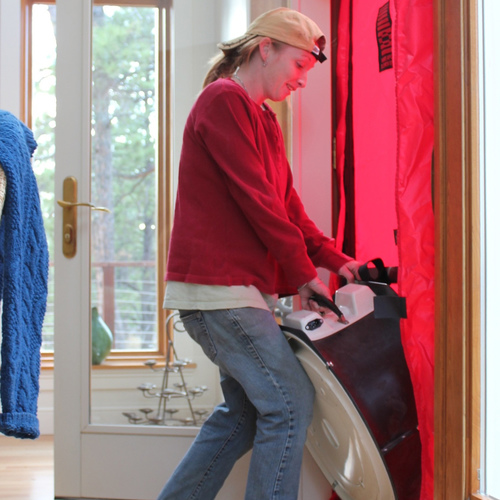
Image Credit: Martin Holladay
With each passing month, GBA’s library of articles and blogs gets deeper. For example, we recently added a new article on Ductless Minisplit Heat Pumps to the GBA Encyclopedia.
Ductless minisplits differ from conventional air-source heat pumps in several ways: first of all, they are extremely efficient, in part because of the use of inverter-driven compressors. Secondly, many of these units can operate efficiently at very low outdoor temperatures.
Since a compact home with high levels of insulation can be heated and cooled with just one or two ductless minsplit units, this type of heating system is very affordable.
The new article answers dozens of questions, including:
- What’s the difference between a ductless minisplit system and a conventional air-source heat pump system?
- Can the outdoor unit of a ductless minisplit system handle several indoor units?
- Why are ductless minisplit systems particularly appropriate for renovation work?
- Why are designers of energy-efficient homes showing an increased interest in ductless minisplit systems?
Subscribe to GBA to enjoy all of the benefits of GBA Pro membership
While some of the articles in the Encyclopedia — for example, the article on Green Mechanical Systems — are available to all readers, others (including the new article on Ductless Minisplit Heat Pumps) are available only to GBA Pro members.
To enjoy all of the benefits of GBA Pro membership, subscribe to GBA Pro today or try our 14-day free trial.
Weekly Newsletter
Get building science and energy efficiency advice, plus special offers, in your inbox.














8 Comments
GBA Pro has no lock on the charms and spells of ductless!
I hope the pictured install isn't put forth as Dumbeldore's best for several reasons:
1) Unit may be mounted too close to wall for proper airflow
2) Use of gutter downspout tube and hardware rather than purpose-built coverings
3) Exposed black Armaflex refrigerant line insulation will deteriorate from UV within a year
4) pinching Armaflex with nylon wire tie reduces its effectiveness.
5) Will magic defend mount from water penetration?
If that install is a harbinger of the secrets within a paid subscription to the GBA school of energy wizardry, then we'd best preserve our gold galleons for other potions!
Response to Curt Kinder
Curt,
Like many photos that appear on GBA, the photo above was taken at an actual job site. It is not a staged photo, nor was it provided by a manufacturer.
I took the photo when I visited the Passivhaus built by Margaret and Gregory Stanton in Urbana, Illinois.
We welcome comments from readers, including your feedback on better ways to install ductless minisplits. This example is not the first time that equipment installers from different parts of the country have disagreed about best practices. Whenever one professional criticizes the work of another, there is the opportunity for dialog and learning. In most cases, we won't always agree -- but we'll probably learn something. This type of learning happens all the time on GBA.
All of that said, you are right, of course, that many readers prefer not to send us any subscription money. That is your right; subscribing is voluntary.
Thanks again for your comments.
UH - OH!
Uh oh!
Now I'll have to assign our least indispensable staff member to open any mail postmarked anywhere near Urbana, IL.
At any rate, now that I know it is in Illinois, I pose one more question - does the mounting location prevent significant snow accumulation and / or allow for snow to be cleared? There appears to be a good overhang, maybe it suffices.
It has long been mantra that air source heat pumps were virtually useless for heating anywhere snow flies; mini splits seem to be rapidly dispelling that notion. If mini splits are to be depended upon for serious winter heating, I assume great care must be taken to address snowfall around the unit. Loss of AC down south is a huge inconvenience, but loss of heat up north has potentially much worse consequences.
I understand the dilemma facing web masters everywhere - Operating a quality website costs time and money, and free, all-you-can-eat grazing offers zero revenue. I have considered GBA Pro but haven't yet become convinced of the value vs cost. FWIW, I have paid for an online subscription to Home Energy Magazine - lots of deep meaty articles and test data about a wide range of subjects of interest to home energy pros.
I do appreciate this site, especially the opportunities to participate...a future pro membership is not out of the question.
Snow on outdoor units
Curt,
The outdoor unit at the Stanton house (shown in the photo above) is located above a south-facing roof, so snow accumulation is unlikely to be a problem.
Other installers didn't do as good a job at anticipating snow depth; the poster child for this problem is the outdoor unit installed at the Montague Urban Homestead in Massachusetts. Mike Duclos has been showing photos of this problem in a PowerPoint presentation at energy conferences lately. The HVAC installer decided to put the outdoor unit on the north side of the house -- right where the roof dumps its load of snow. Mike's slide is shown below.
Doh!
I can't quite read the Energy Guide under all the snow, but it doesn't apply anyway.
South Side
Since mini splits operate more efficiently at warmer outside temps, wouldn't it be obvious to put them on the south side (assuming northern hemisphere)?
Response to Richard Patterman
Richard,
Q. "Since minisplits operate more efficiently at warmer outside temps, wouldn't it be obvious to put them on the south side?"
A. No. The outdoor unit (the condenser) sheds heat during the summer. During the winter, it absorbs heat from the outdoor air. In both cases, the heat transfer occurs by passing outdoor air over a copper coil.
Believe it or not, the temperature of the outdoor air is the same on the south side of your house as it is on the north side of your house. Even if a very small volume of outdoor air on the south side of your house is a little bit warmer (for example, the one-inch-thick layer of air nearest the siding or the one-inch-thick layer of air nearest the steel cover of your condenser), the volume of air that might be a little warmer is tiny. Once that fan kicks on, huge volumes of outdoor air are blown through the coil -- and all of that outdoor air is at the same temperature, whether it comes from the south side of your house or the north side of your house.
Watch out for roof avalanches!
They may have gotten it high enough and under the eaves on the Up Hill house in upstate NY:
http://uphillhouse.files.wordpress.com/2011/07/ashp-1-2.jpg
But it's not clear that they won't still be digging it out in a heavy snow year- I'd have probably opted for mounting it at least 1.5x the record local snowpack depth if locating it under the pitch of a high-angle snow-shedding steel roof like that.
The Stanton's Urbana house installation is probably fine under a deep overhang and well off the deck of the lower roof, unless wind-drift on a blizzard packs it in there.
On a recent central MA deep energy retrofit project I was involved with the mini-splits were about 4' off the ground, but not as well protected by roof overhangs as I was recommending. I suggested building a small shed-roof/awning over them, since it's a 3 story building with plenty of acceleration room should an eave-cornice drop. On my last drive-by they still looked vulnerable, but we'll see... But the record snowpack depths in the neighborhood would still be more than a foot below the mounting brackets, and it's a low enough pitch that the roof won't avalanche due to gravity alone.
Log in or create an account to post a comment.
Sign up Log in